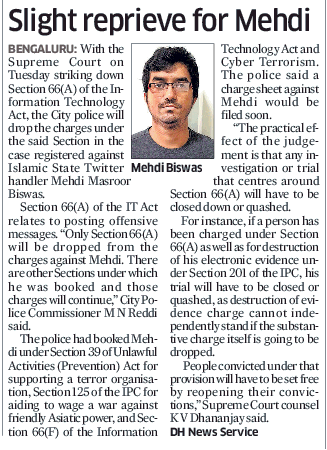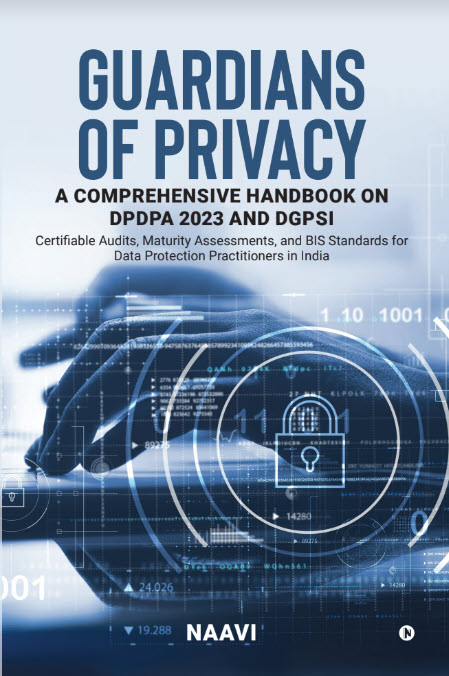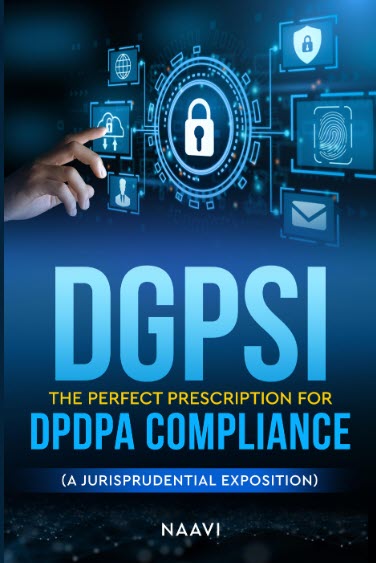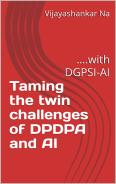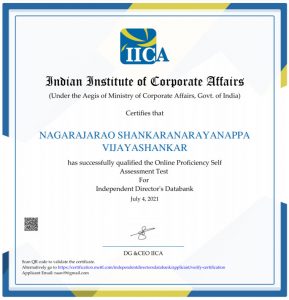The judgement of the Supreme Court of India in the Shreya Singhal Vs Union of India is notable for the fact that the Court has conspicuously asserted its rights over the judiciary and castigated the law makers for the “Vague and Arbitrary” nature of the law. The Court has felt so upset with the vagueness that it has found it necessary to scrap the section though other options were available.
The petitioner (page 5 of the judgement) claimed that “Unlike Section 66”, Section 66A suffers from the “Vice of Vagueness”. The respondents argued that “There is a presumption in favour of the constitutionality of an enactment and if necessary the Court should make it workable by reading into it or read down the provisions”. It argued that “Mere possibility of abuse cannot be a ground to declare a provision invalid”.
It is obvious by inference that the Court agreed with the petitioner as to the vagueness and the need to scrap the section because it can be abused.
“Freedom of Speech is Paramount”:..We agree
The Court held that “Liberty of thought and expression is a cardinal value that is of paramount significance under our constitutional scheme”.
We cannot agree more with this statement of faith in Democracy though we donot agree with the inference reached.
Core Issue was Different
The judgement goes on to cite many other cases defending the Right of free expression. All these citations only divert our attention since the core issue was not whether we should respect freedom of expression or not, but whether Section 66A by legislative intent or actual words infringed on this right.
“Definition of Information Vs Message”
The Judgement after the prefatory remarks pounces on the definition of “Information” and the fact that the definition of “Information” is all inclusive as per section 2(v) of the Act. This is later used to say that Section 66A attacks “All types of information including scientific, literary etc”. The petitioner’s contention that “Public’s Right to know” is directly affected by Section 66A is immediately accepted and becomes the ground to discredit Section 66A.
The petitioners have failed to notice that Internet is only a medium and infrastructure for carrying and storing information of every kind. It is the World Wide Web and different applications such as an E-Mail, Message Board, Chat, Skype etc which hold content either temporarily or permanently. Section 66A addresses only one type of such content namely “Messages” sent either as E-Mails or those sent using a communication device such as SMS/MMS/WhatsApp etc.
The title to the section 66A says
” Punishment for sending offensive messages through communication service, etc”
We need to question now whether the petitioner considers this as “Vague”? Does it not speak of “Messages”? Does it not speak of “Communication Devices”?
Communication device is defined under Section 2(ha) which states
“Communication Device” means cell phones, personal digital assistance, or combination of both or any other device used to communicate,send or transmit any text,video, audio, or image
Is this vague and ambiguous? Do we require a definition for “Messages”?,
Dictionary meaning of “Message” is “a verbal, written, or recorded communication sent to or left for a recipient who cannot be contacted directly.”
The entire section 66A has to be read with the title which refers to messages sent which is as specific as the law can get.
If the Police has wrongly applied Sec 66A aplicable for messages to what is otherwise should be considered as “Publishing” and the petitioner holds out this mistake as the reason to seek scrapping of Section 66A, the Court ought to have in its own wisdom come to the conclusion that Section 66A was not ab-initio applicable for cases such as the petitioner’s cases and hence no decision can be taken on Section 66A. However Court endorsed the mistake of fact on which the petition was based by its judgement.
Another contention of the petitioner was that the offence created by the Section 66A has no proximate relation with any of the eight subject matters contained in 19(2).
The petitioner however forgets that the offence created by Section 66A does not also have any proximate relationship with 19(1) since “Message” which is a one to one communication is not the subject matter of Article 19(1). It is private speech between two persons or a closed group and cannot be considered as “Public Speech”.
The subject matter referred to under 19(2) which empowers making of law imposing reasonable restrictions include
1. sovereignty and integrity of India,
2.the security of the State,
3.friendly relations with foreign States,
4.public order,
5.decency or morality or
6.in relation to contempt of court,
7. defamation or
8.incitement to an offence
Since Section 66A refers to “Messages” it cannot be proximate to any of these issues in the context of “Freedom of Expression”. It is possible that “Messages” may be part of “Conspiracy” and “Broadcast of Messages” can invoke public disorder, incitement etc. But such aspects must be considered under Section 67, 67A and 67B which applies to “Publishing and Transmitting” of information not under Section 66A.
Section 66A is categorical that it applies to something which a person “Sends”. “Sending” is different from “Publishing”. “Sending of Information” is from one source to a destination. “Publishing Information” means placing it in a form that can be read by others over a period of time by opening the published information set (like opening of a book).
The petitioner failed to distinguish between “Messaging” and “Publication” and mislead the Court into believing that on the Internet both are same. Objections which ought to have been raised under Section 67 or 67A or 67B were wrongly raised, admitted and decided upon under Section 66A.
ITA 2000/8 considered restricting publication only if it is “Obscene” as understood under Sections 67,67A,67B and not otherwise. There is otherwise full freedom of expression. All the present controversies have arisen because people have been interpreting ITA 2000/8 from their understanding of IPC and hence imputing meanings which need not be imputed.
The Court did not recognize and debate the difference between “messaging” and “publishing” such as whether twitter is a message or publishing, whether facebook liking is messaging or publishing. These were the issues on which the mind of the Court should have been applied so that the Cyber World would have been wiser after the judgement. Unfortunately the Court diverted onto “Do we require Freedom of Speech on the Internet” and proceeded to say “Yes”, though this was unnecessary.
The petitioners have also raised an objection that “language used in Section 66A is so vague that neither would an accused person be put on notice as to what exactly is the offence” and the Court seems to agree. This is a wonderful argument and next time a law is to be made, we need to hold a seminar in a jail and understand whether the language would be understood by the criminals.
We would like to know from the petitioners when did law became “Mathematics”?. Law has always been an “Interpretation”. Law cannot be developed like an algorithm such as 2+2 is always equal to 4. To expect that law makers will be able to define offences precisely as to the way it is executed by a criminal betrays lack of knowledge of the field of Cyber Crimes and also dishonesty on the part of whoever claims this can be done in all legal enactments. Such precise specifications can only be found in a patent application and not criminal law. If an attempt is made, then it will create more loop holes in the law enabling criminals escaping all pre-defined definitions.
If law can be precise where is the need for Courts and more so the lawyers?
The point that a “Person needs to be put on notice what exactly is the offence” is therefore a mischievous argument deserving to be thrown to the dust bin at first glance.
On the other hand the Court gives credence to the petitioner’s argument and proceeds to analyse different interpretations of words such as “offensive”, “Menace”, “annoyance” etc and comes to a conclusion (page 75)
“..it is quite clear that the expressions used in 66A are completely open-ended and undefined”.
I would like the petitioner to reflect if all the expressions used in IPC are properly “Defined”? “Not open ended”?.
Let’s take just an example. We say under IPC death sentence can be given to a murdered in the “Rarest of Rare Cases” or “Evidence should be proved beyond Reasonable Doubt”. Is it possible to “Define” the terms “Rarest of Rare” or ” Reasonable” in such cases? In all those and in many other cases, Judiciary has the responsibility to consider the circumstances on a case to case basis and arrive at their views. Judiciary cannot run away from its responsibility of interpretation by saying “Let the Executive define everything and I will only check and tick”. The argument that law drafting should be precise as to the “definition of crimes” is therefore unacceptable. It is also impossible in an evolving technology space. In fact law should be flexible for interpretation to accommodate crimes that may arise in the future. When ITA 2000 was drafted, we did not know “Phishing”, “Vishing”, “Advanced Persistent Attacks”, “Man in the Middle Attack” etc. We only knew some thing called “Hacking” and “Virus” the terms was used for most of the offences. Still ITA 2000 held out to cover most of the offences because the offences were defined in general terms and not very specific. In a way we should be proud that there was no need to keep defining cyber crimes and even Section 66 which earlier defined “hacking” was later generalized in ITAA 2008. (It was amusing to note that the judgement refers to Information Technology Amendment Act 2009 in page 1 which is non existent.)
IPC is full of illustrations and examples which have been acquired over a period of time. Why is it not possible to insert such illustrations and examples to ITA 2000/8 to clarify things?. Neither the petitioner nor the Court made an attempt in this regard and was more interested in striking down the section and diluting the law for the next few years until an amendment can be done. Untill then the “Uncertainty” created by the judgement will create more problems and many of them cannot be solved.
As a result, Indian Cyber Space will remain several years behind what is required for the “Digital India”.
In the process it is the people who will suffer on account of this judgement.
Section 66A is singled out for abuse
The judgement tries to single out Section 66A as an “Evil Section” by citing that Section 66 , Sections 66B to 67B are more precise. I am unable to understand how the Court can come to such a conclusion.
Under Section 66 the word “Dishonestly” is defined with cross reference to IPC as -Whoever does anything with the intention of causing wrongful gain to one person or wrongful loss to another person, is said to do that thing “dishonestly”.
This definition is dependent on the meaning of words such as “Intention” and “Wrongful”. What is wrongful for one may not be so for another. What may an intention of a person may not be known even to himself. Then how do we hold Section 66 is a saint and 66A is a devil?
Or take Section 66F which will be frequently invoked from now on for all those offences which were now being wrongly booked under 66A.
Can we define what is meant by “Striking terror”, “Exceeding authorized access”, “restricted information”( Remember that the victim should know whether something is restricted or not as per the subject judgement), “likely to cause injury”, “restricted information in relation to contempt of court or defamation or incitement to an offence” etc?… These are the terms under which “Life Imprisonment” can be meted out under Section 66F. The petitioners and the Judgement holds out that Section 66F is fine and precise but not Section 66A.
The judgement therefore concludes that “Judicially trained minds can come to diametrically opposite conclusions on the same set of facts in interpreting the words such as offensive, menacing etc, and hence Section 66A must be considered as “Constitutionally Vague”.
Speaking on behalf of Section 66A, I consider this highly discriminatory since law is always subject to interpretation, differences in opinion is necessary and healthy and vagueness if any is present in all legislations and not only in Section 66A.
The judgement goes on to add spice on the injury to say that the Section causes “Chilling Effect” etc. The judgement also refused to accept that “possibility of abuse” cannot be a ground for striking down the provision. The Court showed its determination when it said that, “Governments may come and may go, Court cannot save the section based on the assurances of the Government.”…
…. makes a great quote for a sub editor of a news paper but does not reflect the need for a harmonious relationship between Judiciary and the Executive.
Court also refused to consider partial modifications and it would not be satisfied with nothing other than striking down the section. The reason for such a harsh view is difficult to understand except that it sends out a message to the Government who is the boss.
While we congratulate the petitioner for their ability to convince the Court with their own arguments which were not perfect in our opinion, and also note the beneficial aspects of the “Chilling Effect” that the Government of the day cannot take the Courts for granted even when it comes to legislation of the previous Government, we are not convinced that the decision reached in the end was based on a valid foundation built by the petitioners.
Neither Police nor the Petitioner had a clear understanding of the intention of Section 66A and unfortunately, the Court also agreed with the contention of the petitioner.
It is possible that the decision may look like a progressive pro-democratic thought on which the Government can be pulled up and the powers of the Judiciary asserted. Media also might have gobbled up the decision because it makes a good headline material to say “Court castigates the Government”….
…..But it does not make the decision correct.
Naavi

